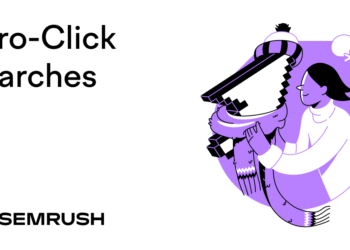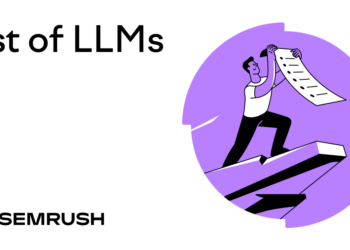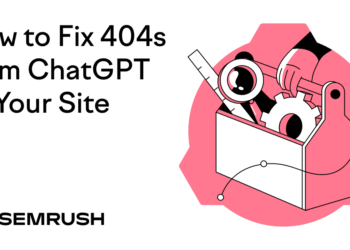What Is a Brand Persona?
A brand persona is a fictional profile that captures your brand’s voice, tone, and style when communicating with people.
Think of it as an imaginary spokesperson who embodies your brand’s traits.
A clear brand persona:
- Keeps voice and messaging consistent
- Guides employees who represent the brand
- Differentiates you from competitors
- Builds emotional ties with potential customers
Here’s an example of how a brand persona document might look:

A complete brand persona usually includes:
- Basic identity: Name, age, occupation, and location of your brand personified as an individual or group
- Core values: Fundamental principles that guide your brand’s actions and decisions, such as integrity, innovation, or sustainability
- Brand mission: Clear statement of why your brand exists, what it aims to achieve, and how it serves customers
- Brand vision: Forward-looking statement that outlines your brand’s future aspirations and long-term goals
- Personality traits: Characteristics that define how your brand behaves and communicates, like friendly, innovative, or bold
- Brand voice: The consistent communication style, including vocabulary choices, sentence structure, and overall content approach
- Brand tone: How your brand’s emotional inflection changes across different platforms and situations while maintaining a consistent voice
- Brand story: Narrative of your brand’s origins, challenges overcome, and driving purpose
- Visual representation: Logo, color palette, typography, and graphic style that visually express your brand’s personality
Download our free brand persona template
8 Steps to Create a Brand Persona (+ Free Template)
To create an effective brand persona, start by understanding your audience and defining your brand’s character traits, voice, and story.
Follow these steps:
1. Visualize the Customers You Want
Understand your target audience before shaping the persona.
Semrush’s Demographics dashboard helps you gain insights into your audience.
Open the tool, enter your domain name, and click “Analyze.”

The Demographics dashboard shows your audience’s age, gender, and location.

Record these findings in the template’s Target Audience Research section.

Blend this information with what you already know about your target audience. Let’s say the totality of your data shows your audience is predominantly business professionals aged 30-45 who are active on LinkedIn and interested in business technology.
Your branding persona can be professional, solution-oriented, and knowledgeable with a direct, efficient communication style.
2. Create Your Brand’s Basic Identity
Give your brand human characteristics like name, age, occupation, and location to make it relatable—you want your customer to see themselves represented in brand materials.
For example, a sales CRM brand might be “Alex, 38, a former sales director from Chicago who understands the challenges of managing customer relationships.”

These details help the team imagine how Alex speaks, thinks, and solves problems.
It turns your brand from an abstract concept into someone they can write, design, communicate, and strategize for and about.
3. Record Your Company’s Values, Mission, and Vision
Your mission, vision, and values explain why your brand exists and what it stands for, which help shape how your brand speaks, what it cares about, and how it should show up in every customer interaction.
List 3-5 core values that guide your decisions. Such as “efficiency,” “transparency,” “innovation,” or “customer success.”
Write your mission statement in one or two sentences that clearly explain why your company exists. Like: “To help sales teams build better customer relationships by eliminating tedious administrative work.”
Add a vision statement describing your long-term aspirations. For example: “To create a world where salespeople spend 90% of their time building relationships and 10% on administration.”

4. Define Your Brand’s Personality Traits
Your brand’s personality traits define how it behaves and interacts with your audience.
These characteristics will make your brand relatable and human to your audience.
Think about your brand as if it were a person. What 3-5 adjectives would best describe its character?
Consider traits that:
- Feel authentic to your company’s purpose
- Appeal to your target audience
- Is distinctive enough to stand out from competitors
For example, a sales CRM brand might be “efficient,” “reliable,” “straightforward,” and “supportive.”

Another brand in the same space might lean into traits like “bold,” “disruptive,” “confident,” and “fast-moving.”
These traits would then influence everything from your brand’s voice to its visual elements.
5. Describe How Your Brand Would Talk
How your brand talks—its voice and tone—helps people instantly recognize and connect with you across every channel.
Your brand voice is consistent. It reflects your brand’s personality and core values.
Your tone changes depending on context. Like sounding upbeat in social posts and more empathetic in customer support replies.
Decide whether your brand should sound formal or casual, technical or simple, serious or playful.
Then define the vocabulary, sentence style, and emotional feel that match those choices.
A sales CRM brand might say, “We’ll help you close more deals with less paperwork,” instead of “Our solution optimizes your revenue generation potential through administrative efficiency.”

6. Capture the Story That Motivates Your Brand
Creating a compelling brand story helps people connect emotionally with your brand and understand its purpose.
This narrative explains your brand’s conception.
Start with the origin of your brand.
- What problem or opportunity led to its creation?
- Who was involved?
- What challenges did they overcome?
Your story should feel authentic while highlighting values that matter to your audience.
For instance, the story of a sales CRM brand might center on its founder, who was frustrated with spending more time on data entry, which inspired them to create a simpler solution.

Further reading: Definitive Guide to Brand Storytelling
7. Create Your Brand’s Visual Identity
Your brand’s visual identity helps people recognize your brand at a glance and understand what it stands for.
Work with a designer to build a strong and consistent brand identity across these four elements:
- Logo: Design a simple, memorable mark that captures your brand’s essence
- Colors: Choose 2-3 main colors that reflect your brand traits
- Fonts: Select typography that matches your voice
- Graphics: Develop a consistent style for icons, illustrations, and images
For example, professional blues with orange accents and clean sans-serif fonts might work well for a sales CRM brand. They convey both reliability and efficiency, which are important for the busy sales professionals they’re targeting.

8. Pull Everything Together
Review your completed brand persona to ensure all the elements align and create a consistent character.
Share it with your team for feedback.
Also, consider adding more detail and context where needed to ensure it’s easier for non-marketing colleagues to understand this document.
Remember: Your brand persona isn’t set in stone. You can expand it over time with additional details like customer pain points or communication preferences. And revisit it as your brand grows or your audience shifts.
Once finalized, distribute it across your organization so everyone represents your brand consistently.
Example Brand Personas for Inspiration
Here are three brand persona examples to help you understand them in action:
Nike
Nike’s brand persona is bold, inspiring, and competitive. This mission: Bring inspiration to every athlete.
The slogan “Just Do It” fuels a high-performance mindset. Which is reinforced through bold, action-driven storytelling. Like this video:

Nike’s website and social media highlight elite and everyday athletes, emphasizing perseverance and personal growth.

Its emails use short, motivational copy, keeping the brand voice strong and confident.

Visually, Nike relies on high-contrast imagery, dramatic lighting, and dynamic motion shots that ensure every channel reflects a relentless, empowering spirit. Here’s an example from its X timeline:

Here’s how Nike’s brand persona might plot in our template:

Slack
Slack’s persona is approachable, witty, and efficient, driven by its mission to make work simpler, pleasant, and productive.
The brand voice is friendly yet professional, often using light humor and casual phrasing. Like this X post:

Its emails and in-app messages maintain this tone, keeping interactions helpful, clear, and engaging. Like this:

On social media, Slack engages with users in a relaxed, conversational way, reinforcing its role as a supportive team player. Like this interaction on Instagram:

Visually, the brand’s vibrant colors, playful icons, and clean design make it feel inviting and intuitive.

Here’s how Slack’s brand persona might plot in our template:

Dove
Dove’s persona centers on authenticity and care, with a mission to make “beauty a source of confidence, not anxiety.”

The brand showcases unretouched images of diverse women, uses empathetic language in communications, and creates educational content about self-esteem to help youth. Like this:

Their consistent rejection of beauty stereotypes demonstrates how a meaningful persona can drive both messaging and social impact.
Take this campaign as an example in which Dove pledges not to use AI-generated people in its ads:

Here’s how Dove’s brand persona might plot in our template:

Understand What Resonates with Your Audience
Your brand persona is only effective if it aligns with what truly engages your audience.
Use real data and audience insights to refine your messaging, tone, and personality.
The Semrush Traffic & Market Toolkit helps you analyze your audience’s demographics and traffic behaviors. Give it a try today.

















